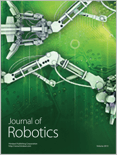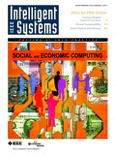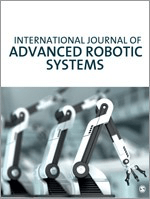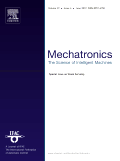
Journal of Robotics Networking and Artificial Life
Scope & Guideline
Exploring the Future of Robotics and Life.
Introduction
Aims and Scopes
- Robotics Engineering and Automation:
Research in this area includes the design, development, and deployment of robotic systems for various applications ranging from industrial automation to personal assistance. - Artificial Intelligence and Machine Learning:
The journal emphasizes the application of AI techniques, including deep learning, reinforcement learning, and neural networks, to improve the capabilities of robotic systems and enhance their decision-making processes. - Networking and Communication Technologies:
This encompasses the study of communication protocols, network security, and collaborative systems that enable robots and AI systems to interact seamlessly with each other and with human operators. - Human-Robot Interaction and Social Robotics:
Research in this domain focuses on improving the interfaces and interactions between humans and robots, including the development of intelligent assistants and social robots that can engage in meaningful interactions. - Sustainable and Assistive Technologies:
The journal explores the development of technologies aimed at addressing global challenges, such as environmental sustainability and healthcare solutions, particularly through the use of robots and AI.
Trending and Emerging
- AI-Driven Robotics and Deep Learning Applications:
There is a significant increase in research utilizing deep learning and AI to enhance robotic functionalities, including perception, decision-making, and learning from environments. - Robotics for Environmental Sustainability:
Emerging themes include the use of robotics for environmental monitoring, marine debris cleanup, and sustainable agricultural practices, indicating a strong focus on ecological applications. - Human-Centric and Assistive Robotics:
Research focused on developing robots that assist individuals, particularly in healthcare and rehabilitation, is gaining momentum, highlighting the importance of technology in improving quality of life. - Cybersecurity in Robotics and AI Systems:
With the rise of connected robotic systems, there has been an increasing focus on securing these technologies against cyber threats, reflecting the need for robust security measures in modern robotics. - Integration of IoT and Robotics:
The intersection of Internet of Things (IoT) and robotics is emerging as a significant area of study, focusing on enhancing robotic systems with connectivity and smart capabilities to improve operational efficiency.
Declining or Waning
- Traditional Mechanical Robotics:
Research focused on purely mechanical aspects of robotics, such as kinematics and dynamics of traditional robotic arms, has seen a decline as the field shifts towards more integrated and intelligent systems. - Basic Control Systems without AI Integration:
There has been a noticeable reduction in publications centered on classical control systems that do not incorporate AI methodologies, as the field moves towards more intelligent and adaptive control strategies. - Non-interactive Robotics Applications:
Research that focuses on non-interactive or isolated robotic systems is becoming less common, as there is a growing emphasis on collaborative robotics and systems that require interaction with humans or other robots.
Similar Journals

International Journal of Semantic Computing
Exploring the Nexus of AI, Linguistics, and NetworksThe International Journal of Semantic Computing is a premier scholarly publication focused on the intersection of artificial intelligence, computer networks, and linguistics, published by World Scientific Publishing Co PTE Ltd. Since its inception in 2007, this journal has strived to advance the field of semantic computing by promoting innovative research and interdisciplinary collaboration among professionals and academics. With a diverse scope that spans across various categories including Artificial Intelligence, Information Systems, and Linguistics, it boasts commendable rankings, particularly in the fields of Linguistics (77th Percentile) and Linguistics and Language (Rank #259/1167). The journal caters to a broad audience by offering critical insights and cutting-edge studies, thereby contributing significantly to knowledge enhancement in semantic technologies and computational linguistics. Although it does not offer open access options, its rigorous peer-review process ensures the publication of high-quality research that is invaluable for both researchers and students seeking to deepen their understanding in these rapidly evolving areas.

Journal of Advanced Computational Intelligence and Intelligent Informatics
Unlocking the Potential of Intelligent InformaticsThe Journal of Advanced Computational Intelligence and Intelligent Informatics, published by FUJI TECHNOLOGY PRESS LTD, stands as a pivotal platform in the fields of Artificial Intelligence, Computer Vision, and Human-Computer Interaction. Established in 1997, this Open Access journal has been providing accessible insights into the latest advancements in computational intelligence and informatics since 2007. With its ISSN 1343-0130 and E-ISSN 1883-8014, this journal invites a diverse readership, including researchers, professionals, and students eager to explore innovative methodologies and applications. Despite its current Q4 ranking in the relevant categories, the journal remains committed to contributing valuable knowledge to the academic community and enhancing the global discourse in computational technologies. With its focus on fostering communication and collaboration among scholars, the journal plays an essential role in driving forward the understanding of intelligent systems and their applications in various domains.

Journal of Robotics
Exploring the Frontiers of Robotic EngineeringJournal of Robotics, published by HINDAWI LTD, is a premier open-access journal dedicated to the rapidly evolving field of robotics. With its ISSN 1687-9600 and E-ISSN 1687-9619, the journal has been an essential resource for researchers, professionals, and students since its establishment in 2009. Based in England, the journal not only aims to disseminate cutting-edge research but also provides a platform for critical discussions on the latest advancements in robotics. Recognized for its quality, the journal holds a Q2 ranking in Computer Science (miscellaneous) and a Q3 ranking in Control and Systems Engineering for the year 2023. Spanning topics from autonomous systems to robotic engineering, the Journal of Robotics is indexed in various esteemed databases, making it a credible source for innovative research. The journal's commitment to open access ensures that its research reaches a broad audience, encouraging collaboration and driving forward the boundaries of technology and engineering.

IEEE INTELLIGENT SYSTEMS
Exploring the Future of Artificial IntelligenceIEEE Intelligent Systems, published by the renowned IEEE Computer Society, stands at the forefront of research in the fields of Artificial Intelligence and Computer Networks and Communications. With an impressive Q1 ranking in both categories as of 2023 and Scopus rankings placing it in the top 5% of its field, this journal not only showcases cutting-edge scientific advancements but also serves as a vital resource for practitioners, academics, and students seeking to deepen their understanding and application of intelligent systems. The journal covers a broad range of topics including machine learning, data mining, and system architectures, reflecting its commitment to addressing contemporary challenges and innovations in technology. Although it does not offer open access, the journal's research contributions are invaluable, ensuring that its readership remains engaged with the latest findings and applications in a rapidly evolving field. For those interested in submitting high-quality research or staying updated on the latest developments, IEEE Intelligent Systems represents an essential hub of knowledge.

Robotic Intelligence and Automation
Connecting Minds in Robotics and Automation Research.Robotic Intelligence and Automation is a pioneering academic journal dedicated to the exploration and advancement of knowledge within the realms of robotics, artificial intelligence, and automation technologies. Published by EMERALD GROUP PUBLISHING LTD in the United Kingdom, this journal serves as a critical platform for researchers, professionals, and students who strive to understand and innovate in these rapidly evolving fields. With an impressive visibility across multiple disciplines, it has achieved a respectable Q2 ranking in Computer Science Applications, Control and Systems Engineering, Electrical and Electronic Engineering, and Industrial and Manufacturing Engineering, while also being recognized in Q3 for Artificial Intelligence and Human-Computer Interaction. The journal boasts a comprehensive Open Access model, allowing broad dissemination of research findings, which is vital for fostering collaboration and learning within the scientific community. Researchers can look forward to contributing to a publication that not only addresses current challenges but also seeks to shape the future of intelligent automation and robotics.

Frontiers in Robotics and AI
Exploring New Dimensions in Robotics and AI ResearchFrontiers in Robotics and AI is a leading journal dedicated to the exploration and dissemination of groundbreaking research in the fields of robotics and artificial intelligence. Published by FRONTIERS MEDIA SA in Switzerland, it has established itself as a vital resource for academics, professionals, and students since its inception in 2014. With an impressive Open Access model, the journal ensures that high-quality research is accessible to a global audience, fostering collaboration and innovation. The journal is recognized for its distinguished impact in the academic community, achieving Q2 quartile rankings in both Artificial Intelligence and Computer Science Applications as of 2023. It currently holds a solid position in Scopus rankings, with a rank of #123 out of 350 in Artificial Intelligence and #223 out of 817 in Computer Science Applications, reflecting its robust contribution to these dynamic disciplines. The journal's scope encompasses a wide range of topics, including but not limited to autonomous systems, machine learning, and human-robot interaction, making it an essential platform for innovative ideas and advanced research.

International Journal of Electrical and Computer Engineering Systems
Transforming Knowledge into Engineering ExcellenceInternational Journal of Electrical and Computer Engineering Systems is a prominent publication dedicated to the advancement of knowledge and innovation within the rapidly evolving fields of electrical engineering and computer science. Published by J J Strossmayer University of Osijek, Faculty of Electrical Engineering, this journal is committed to providing a platform for researchers and professionals to disseminate high-quality research and share groundbreaking findings. With an ISSN of 1847-6996 and an E-ISSN of 1847-7003, the journal spans a range of topics including Computer Networks and Communications, Electrical and Electronic Engineering, and Hardware and Architecture. As noted in the 2023 assessments, it holds a category quartile ranking of Q4 across these relevant disciplines. Despite its current Q4 standing in Scopus rankings—with the journal positioned at the lower percentiles—it remains a vital resource for academics looking to explore emerging trends and applications in electrical and computer engineering systems from its home country of Croatia. The journal’s ongoing development from 2016 to 2024 reflects its evolving scope and the commitment to encouraging scholarly contributions. Researchers and students alike will find the **International Journal of Electrical and Computer Engineering Systems** an invaluable repository of information and a catalyst for further research in their fields.

Journal of Sensor and Actuator Networks
Connecting ideas, driving technological advancements.Journal of Sensor and Actuator Networks is a premier open-access journal published by MDPI, dedicated to advancing the field of sensor and actuator technology since its inception in 2012. With a commitment to disseminating cutting-edge research, the journal offers a platform for articles that explore the latest innovations and applications in the realms of computer networks and communications, control and optimization, and instrumentation. It proudly holds a prestigious Q1 ranking in instrumentation and Q2 rankings in both computer networks and control and optimization as of 2023, emphasizing its significant impact within these domains. The journal is indexed in Scopus and is recognized for its high-quality contributions, with impressive rankings including 9th in control and optimization and 19th in instrumentation. Researchers, professionals, and students seeking to stay at the forefront of sensor and actuator technologies will find a wealth of insightful articles and studies within its pages. As an open-access journal, it ensures that knowledge is widely accessible, fostering collaboration and innovation across the global scientific community. For more information, the journal is based in Basel, Switzerland, situated at ST ALBAN-ANLAGE 66, CH-4052 BASEL, SWITZERLAND.

International Journal of Advanced Robotic Systems
Exploring Innovations in Robotic SystemsThe International Journal of Advanced Robotic Systems is a premier academic journal, published by SAGE Publications Inc., dedicated to fostering innovation and research in the rapidly evolving field of robotics. With an ISSN of 1729-8814, this Open Access journal has been providing unrestricted access to cutting-edge research since 2004, making it an invaluable resource for researchers, professionals, and students alike. The journal aims to disseminate high-quality, peer-reviewed articles that cover a wide range of topics, including but not limited to robotic systems, automation, artificial intelligence, and sensor technologies. By promoting interdisciplinary collaboration and encouraging novel approaches, the International Journal of Advanced Robotic Systems plays a crucial role in advancing the frontiers of robotics and ensuring its impactful application across various industries. Engaging with this journal not only keeps you at the forefront of the latest developments but also contributes to the global discourse on robotics and its advancements in science and technology.

MECHATRONICS
Exploring the Synergy of Mechanics and ElectronicsMECHATRONICS is a prominent journal published by PERGAMON-ELSEVIER SCIENCE LTD, focusing on the interdisciplinary fields of mechanical engineering, control and systems engineering, electrical and electronic engineering, and computer science applications. With an ISSN of 0957-4158, this journal has been a cornerstone in advancing knowledge and innovation since its inception in 1991. Known for its rigorous peer-review process and high-quality research outputs, MECHATRONICS holds prestigious rankings, including Q1 in both Electrical and Electronic Engineering and Mechanical Engineering for the year 2023, reflecting its influential position in the academic community. The journal caters to a diverse audience of researchers, professionals, and students, making it an essential resource for those looking to stay at the forefront of technological advancements in mechatronic systems. Although it does not currently offer open access, its wealth of insights and findings is indispensable for anyone pursuing excellence in engineering methodologies and applications.